INTRO:
The Iron Chef shows – or to be more precise, their dubbing – have always been an entertainingly ham-fisted source of hilarity. On a completely different note, fantasy kingdoms would not be fantasy kingdoms if they are not typically beset by monsters. Then, there is a recent rise of the fictional theme that anything that is animalistic is probably just as edible as a known animal (especially in Japanese manga).
Some people thought it would be a great idea to somehow mash all of these together, and into a video game, no less.
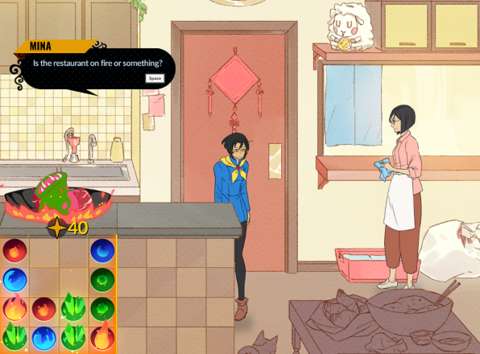
PREMISE:
The setting in Battle Chef Brigade is that of a typical fantastical world, swamped by monsters of mysterious origin. The monsters displaced (i.e. annihilated) most of the creatures in the previous natural ecosystems.
The peoples of the world not only risk grievous harm from the monsters, but also starvation. In this world, there would be no fantastical gods that would answer their prayers – but there are heroes. Of course, there would be heroes.
According to the legend that led to the current era in this fantasy world, a king and his chef ended this siege. Perhaps out of desperation, they have come up with the creed that the monsters should be cooked and eaten. It is a crazy notion, but the results speak for themselves: the monsters are deliciously edible. With this discovery, the fear of monsters melted away like lard on a hot pan.
Thus, from the aforementioned creed, the Battle Chef Brigade was raised. It is practically an army of hunter-soldiers who also happen to provide provender.
MINA THE ASPIRANT:
The Battle Chef Brigade is composed of trained cooks and monster-killers. Being a brigadier is a noble profession that also grants access to much culinary knowledge, so it is not a surprise that there are many aspirants, despite the danger of fighting monsters.
Mina Han is one such aspirant. She is the second daughter of a family in Windy Village, an otherwise idyllic place. Incidentally, she is that kind of character that would like to pursue an exciting life away from her hometown. Having been taught cooking by her family (all of whom are cooks, apparently) and trained in combat too (presumably by her mother), she aspires to develop her craft further – something that she thinks won’t happen if she stays at home.
Thus, she intends to run off to join the yearly tournament of the Battle Chef Brigade at the capital of Victusia. Unfortunately, her lack of preparation for the tournament – and missing one too many briefings and orientations – would result in problems.
THE BLIGHT:
Mina’s heartbreaking setbacks would eventually take a backseat to another development in the story: the monsters’ flesh is becoming sour and bad to eat, at least not without more preparation. Mina, along with many other aspirants, would be recalled to the capital to help in the investigation of the blight.
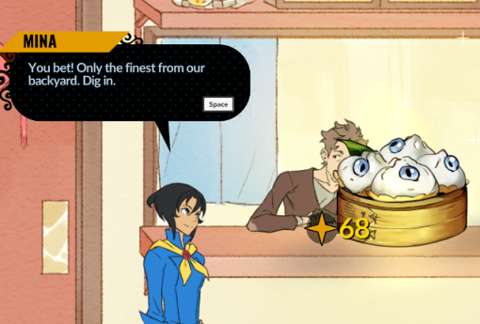
STORY MOSTLY MATTERS TO GAMEPLAY:
All of the above might seem like a whole lot of spoilers, but all of them do happen to matter in the gameplay. They are used as the narrative set-up for tutorials and the gradual introduction of gameplay mechanisms. Not many games could convincingly exhibit this kind of complexity, so this is a considerable plus for Battle Chef Brigade.
There are some notable shortfalls here and there, of course. For example, early on, one of Mina’s friends would explain the basic rules of preparing a dish, one of which is the removal of any “poison”. The ingredients in the early part of the game lack any poison, which is only introduced later at the onset of the blight.
The story eventually reaches a rather underwhelming conclusion, mainly due to the simple and repetitive gameplay of the home-run stretch.
INSTABILITY WITH ALT-TABBING:
Unfortunately, the game has some serious problems with Alt-Tab inputs. Returning to the game with mouse-clicks instead of the keyboard inputs would eventually cause the game to glitch, freezing the computer’s GPU and rendering the player unable to do anything with the Windows desktop.
A MIXTURE OF GAMEPLAY:
Battle Chef Brigade relies on a mixture of gameplay. There is the visual novel-like setting, which has the player directing the player character around on a (mostly) day-by-day basis (though there are several time skips). In these scenes, the player character talks to other characters and learns something about them and the backstory of the game. From these scenes, the player enters into sessions about the other parts of the gameplay.
The gameplay of cooking ingredients into dishes is implemented through match-three puzzle-solving. The grid for this is quite small, however, and there would be multiple grids for the player to worry about too. Any cooking utensils that the player character would use do alter the rules for the match-three gameplay. Furthermore, this gameplay occurs in real-time, to reflect the changes in the ingredients as they are cooked.
The gathering of ingredients is implemented through 2D platforming and combat. The player character has to jump and run on platforms where monsters are loitering about, targeting specific monsters for the ingredients that they yield upon death. There are also some minor gameplay elements that are tied to the hunting, such as an ecosystem of sorts that have monsters producing ingredients that could not be had in other ways.
Each of these gameplay systems will be described further later.
VISUAL NOVEL:
The same 2D framework that is used for the monster hunts is used for navigation in the visual novel segments. Whenever Mina is in the proximity of characters that she can talk to, a gold-beige diamond shape appears over their heads. If Mina has yet to talk to them for the day, the diamond appears readily. Talking to them again merely repeats the conversation, however.
Usually, this portion of the game is there for the characters to express their personality and motivations. If there is a gameplay-related occasion that can occur through any interaction in this portion, it is usually indicated via a different button prompt.
Speaking of button prompts, there is a minor annoyance in this portion of the game: the same button prompt for talking to people is the same control input for jumping. Besides, there is no reason to be jumping around in these segments because there is nothing to be reached through jumping.
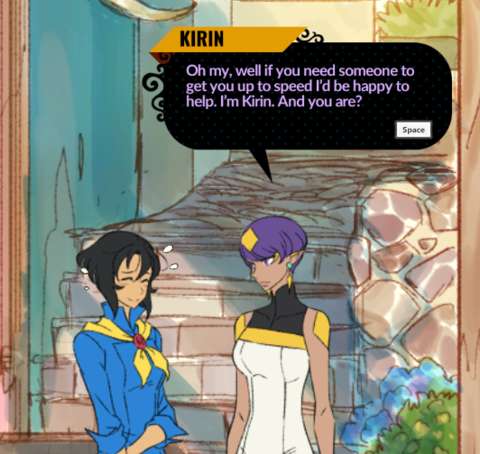
SKIPPING LINES:
Sopping playing and then continuing later would place the player at the beginning of any scenario that the player is currently at in the playthrough. The player may also have to go through cutscenes and dialogue again.
By default, the player has to mash on the button prompt to advance to the next line. Alternatively, the player could just hold down the button for skipping lines to fast-forward to the end. However, this can only be done when the button prompt to do so appears on-screen – otherwise it does not work.
Perhaps this could have been better implemented, such as letting the player skip entire cutscenes that he/she has already watched by pressing the “Esc” button. Of course, this game just has to be designed for universal compatibility with known control schema.
MATCH-THREE COOKING:
Like the typical match-three gameplay that had been established by Bejewelled, the player is shown a mess of gems. The player generally has to match a few gems in a straight line, horizontal or vertical, and something nice happens. In the case of this game, the innovations are the types of gems, the conditions for matching, what happens when they are matched, and the goals for matching.
“TASTE GEMS”:
For lack of a better term, the gems are called “taste gems”. The culinary knowledge base in the fantastical world of this game has identified three main elements of taste: fire, earth and water. Thus, there are three types of gems, which are the most common that the player would encounter. Matching these will be the player’s priority for most of the cooking-related gameplay.
The taste gems have three grades. The first grade is the most common; this is reflected by the mundane look of the gems. The higher grades are obtained by matching gems of the same type together. The highest grade gems cannot be combined any further, however. They will take up space on the grid, which is something that the player will have to consider in the cooking matches.
COOKING VESSELS:
In cooking sessions in which the player gets to have a say, the matching conditions for the games depend on the cooking vessel that is used. More often than not, the player can only select cooking vessels for cooking matches before the start of the match and the explanation of any match caveats. Therefore, the player may either want to have general purpose vessels, or just quit to the main menu and reload the playthrough to change loadouts before the match. (Loadouts will be described later.)
The default cooking vessel is a pan. It follows the usual rules on match-three’s, e.g. matching three gems. It has no other properties. There happens to be a cooking vessel that is the default pan, but with a straight upgrade in the form of combo rewards. Stringing multiple matches in a short time builds up a combo, which is eventually converted into upgrade locations on the grid. Any gems in those locations are upgraded.
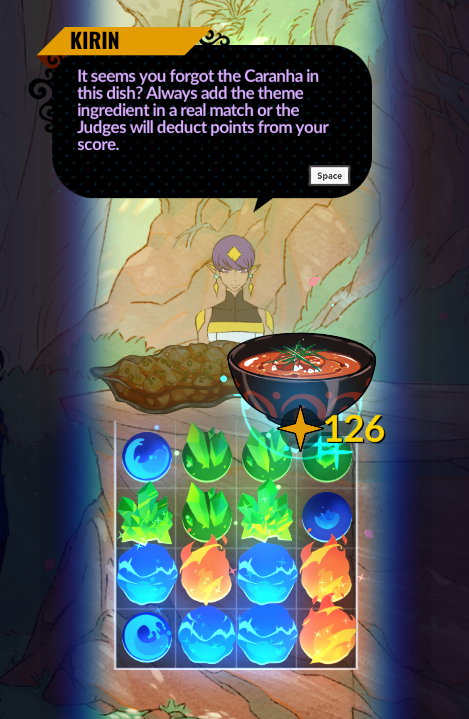
Other cooking vessels have as many advantages as they do disadvantages. For example, the magically attuned pots and pans will only match their associated taste gems, but can make matches with just two gems. Indeed, some players may consider these vessels to be more useful in the early portions of the playthrough, when the judges prefer dishes with mainly one type of taste gem. There will be more on the judges later.
Regardless of the player’s choices, all cooking vessels have grids of the same size: four by four. This can seem rather small-scale, but it does make the cooking gameplay quicker. This is just as well, because most cooking matches are timed.
DROPPING INGREDIENTS:
Every ingredient has taste gems in various mixtures as well as various orientations. The player should consider this before dropping ingredients into any grid. This is because once the ingredients have been added to the dish, their taste gems become that dish’s permanently, with no means of separation.
More importantly, the player cannot change the orientation of the taste gems in the ingredients before dropping them. If there is not enough space for the orientation to drop into the grid, the ingredients simply cannot be added. A particular example of this is the Ruby Jerky, which has a vertical line of four gems, meaning that it needs an entire empty column to be dropped – something that can be difficult to get in a grid that already has many gems.
On the other hand, the player could drop ingredients into spare cooking vessels, start cooking and then change their orientations before lifting them up. Interestingly, any dish or partially prepared ingredient can be dropped into any other, as long as their grid has enough space.
STIRRING:
Cooking vessels that are clearly spacious containers, e.g. pots and pans, allow the player character to “stir” – which is the game’s term for the act of manipulating gems. In the case of this game, it is the rotation of gems in a two-by-two orientation, as selected by the player. The player has two control inputs for this: clockwise, or counter-clockwise.
This would be familiar to anyone that has played Bejewelled and its ilk – so far, so familiar. The only difference here is the act of dropping the ingredients. If the ingredients have taste gems in a convenient orientation and the player can drop them down the right columns, the player may not even need to stir.
The grid that belongs to the empty space on the counter and the grid for the chopping block do not allow stirring, for the reason that they are not applying heat to the dishes.
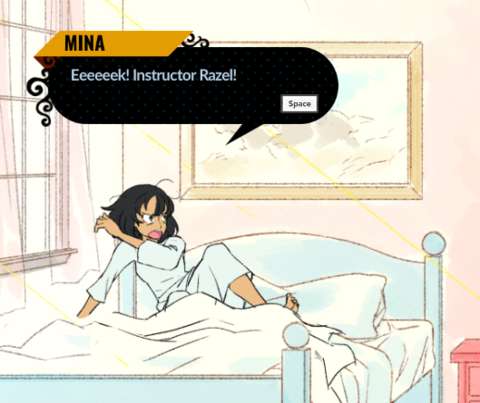
STIR-ONLY – NO OTHER PREPARATION METHODS:
Some of the dishes do clearly require more than just tossing ingredients into a vessel and stirring them. Yet, stirring is indeed all the player character would do to somehow turn ingredients into dishes after the ingredients have entered the cooking vessel.
This is, of course, a complaint about the lack of visually convincing cooking. Again, this might be due to the low budget of the game.
That said, at least one other preparation method is represented as a gameplay element: chopping.
CHOPPING:
The player may need to serve dishes with a proper balance of high-quality taste gems. The player may need to remove certain things from the dish, either to avoid penalties or to free up space for more taste gems.
There are a few means for doing so, but the most useful and reliable method is to subject a dish to the chopping block. In the story mode, the chopping block has to be purchased from the travelling shopkeeper (who is a double-headed hunk of a cyclops, by the way). It is not granted as a reward for completing any errand. Nevertheless, it is worthwhile, due to the control that the player has over it.
When the taste gems of a dish goes into the grid of the chopping block, the usual control input for stirring turns into that for destroying specific gems, or other things that are occupying the slots. The player can select any object for quick removal. If there is any problem with this convenience, it is that the player has to mash on the control input to remove the object; letting up causes the chopping progress to reset.
Interestingly, the practical differences between the player characters also extend to their prowess at using the chopping board. For example, Thrash the orc chef needs fewer blows than Mina to destroy a gem, but Mina can deliver blows more rapidly.
GEM MERGING:
The resultant gem from a match generally occurs at the middle of line, in the case of odd-numbered matches. For four-gem matches, it can be any of the middle two; I have yet to observe any predictable pattern. For two-gem matches, the result occurs at either original gem.
Such randomness can complicate attempts at making further matches, especially after the remaining gems in the grid fall downwards into the gaps left by the matching.
GRAVITY:
Despite being a presumably abstract representation of the substances in food, the taste gems are affected by gravity – not unlike the ones in the games that came after Bejewelled. The taste gems can fall if there are no other gems below them. In a four-by-four grid, this is not too much of an issue, because a quick player can rectify any mistake.
A cunning player may even plan for such falls; as long as the dish is in an activated cooking vessel, any matches caused from the falls will take effect anyway.
That said, gaps that lead to falls can be caused by matched gems merging, as mentioned earlier. Chopping things also cause gaps. Finally, fragile gems can crack and be lost, leaving behind gaps.
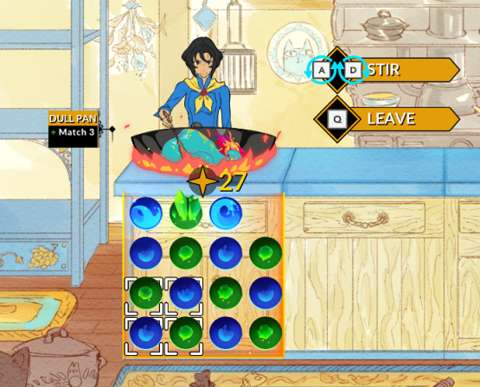
FRAGILITY:
The onset of the Blight coincided with the weakening of the taste gems in ingredients. When something yields ingredients, especially if it is a blighted creature, the ingredients may have their usual gems afflicted with fragility.
Attempts to stir taste gems that have become fragile results in further weakening, as indicated by the number of white strands that surround a taste gem. If a gem is close to breaking, it also flashes dark-red repeatedly.
(That said, there is one scene in which Mina clearly says out loud the presence of the strands around affected gems. This suggests that cooks can perceive the taste gems and anything that is around them.)
A gem that has been matched with other gems will lose its fragility; this is useful to keep in mind, especially the for puzzle-solving mini-games (more on these later). Fragile gems can also be repaired with the use of a special cooking vessel, if the player is alright with using this instead of the other vessels.
POISON:
There are poison motes, which can reside alongside taste gems. The player certainly will not want to leave any of this in the dish; there is a penalty for this negligence. Besides, poison motes take up space that could have been occupied by other things.
Generally, only certain ingredients have poison motes by default, such as cave-growing mushrooms. However, blighted creatures have a chance of having poison motes in their ingredients too.
Poison motes can be a nuisance, or an opportunity. In the latter case, poison motes can be matched like taste gems, after which they enchant certain slots in the grid, much like how a certain pan that reward match combos would. Any taste gems in these enchanted slots will be upgraded after the countdown meters on the slots have emptied.
However, like fragile gems, poison motes will eventually trigger if stirred around too much; they glow and writhe more alarmingly as this happens. When they blow up, any adjacent taste gem is rendered fragile, which can complicate any further stirring in the grid.
BONES:
Some ingredients happen to have bones. Incidentally, powerful monsters tend to release ingredients with these.
Bone fragments do not immediately improve the dish and do not make it worse either; they just take up space. Players who could not get enough ingredients might have to resort to just chopping the fragments out, if they have a chopping block.
However, if the player could get enough appropriate ingredients that also happen to have bones, the player can match them together to produce a rainbow gem.
RAINBOW GEM:
Generally, the only way to get rainbow gems is to match bones. However, there is a late-game ingredient that can drop multiple rainbow gems into the grid.
On their own, rainbow gems do nothing much; they cannot even be matched with each other. A rainbow gem, however, can substitute any gem in any match-up. This is useful if the player is resorting to filling up the grid with as many gems as possible.
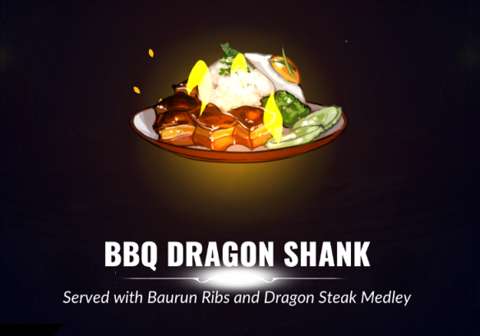
BASE DISH SCORE:
Any dish is given a score, based on the number and quality of its taste gems. Having more quantity and more quality is always better. However, the grid of the dish will become increasingly crowded and thus less easy to drop new ingredients into. Incidentally, dropping ingredients is the first and main step of improving a dish further.
That said, any dish that has already been prepared from an ingredient can be dropped into another dish, if the latter’s grid has enough space.
JUDGES:
Every cooking match would be overseen by at least one “judge” – specifically the kind of judge that one would see in the Iron Chef shows.
The judges have preferences that are aligned along permutations of taste gems. For example, one judge who happens to be an orc chieftain always insists on having a lot of Earth gems in the dish. That said, the player has to make dishes that have considerable amounts of those taste gems. Specifically, there have to be taste gems of the highest grade – lesser grades do not appear to count (but will contribute to the scores of the dishes anyway).
There are not many permutations of taste gems to be had, since there are only three types of taste gems. There so happen to be more judges than there are permutations. Thus, the player may notice significant repetition in this matter.
Furthermore, there are recurring judges, and most of these characters would not have any role beyond being judges. They also have completely static artwork. Indeed, if there is anything in the game that would give a very strong impression that the game is budget-strapped, this is it.
In single-player, the player can end a cooking match earlier by placing dishes on the judges’ table. As long as any of the judges remain unserved with any dishes, this will not happen; this is especially useful to keep in mind, as will be described further later.
THEME INGREDIENT:
Every cooking match is based around a theme monster (again, not unlike the Iron Chef shows). The dish should have ingredients from this monster, or there will be a considerable penalty.
The appearance of the dish depends on the first ingredient that is dropped into a cooking vessel. Interestingly, the first ingredient does not have to be an ingredient from the theme monster. As long as the ingredients include a number of those from the monster, the dish qualifies.
SCORE BONUSES:
If a dish meets a judge’s preference, i.e. having enough of the taste gems that he/she wants, the dish gains a score bonus. In the case of judges that wants a mixture of taste gems, the dish must have equal amounts of high-grade gems for each type of gem. This exact requirement is not told to the player, however. If the player does not meet these preferences, then no penalty is given.
The player can also have the player character equip cooking books. These impart considerable score bonuses if the player can meet their requirements for the dish. These are useful if the player is going for thematic dishes (which may or may not match the judges’ preferences).
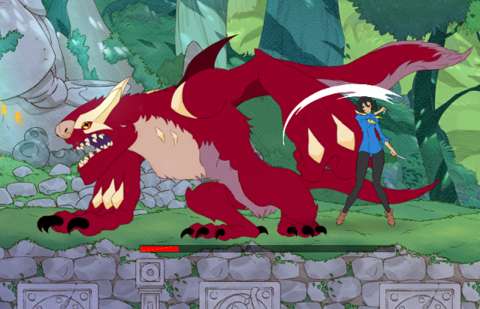
SCORE PENALTIES:
A dish can be inflicted with penalties, if whoever cooked it did not follow the rules. The worst penalty is not including any ingredients from the theme monster. A penalty is also inflicted if poison remains in the dish.
Generally, it is not difficult for a careful player to avoid these penalties. The CPU-controlled opponent, however, will make such mistakes because their dishes have randomly mashed ingredients and upgraded taste gems. There will be more elaboration on this later.
LOADOUTS:
The player character has three categories of gear and skills. The first category is for the purpose of combat. These can be gear that improve the player character’s capabilities, or skills that do the same. The skills function like gear by the way, which can seem odd because they are something that should stay permanently with the player character.
The second category of gear contributes to the player’s cooking. The player can equip special ingredients, many of which appear to be herbs or preserved meats; apparently, these are legal entries for the matches. The player can also equip the aforementioned cooking books, if he/she is a high-roller.
The third category of gear is cooking implements. At least one of them has to be a cooking vessel that can make matches, or else the player is going to have trouble making a high-quality dish.
DISAPPOINTING LIMITATIONS IN LOADOUT FOR SINGLE PLAYER:
Unfortunately, the many special ingredients, cooking vessels and combat gear would be mostly wasted in the story mode. This is because there is a rather restrictive limitation of just three items for each category in the loadout. This limitation might be understandable in the case of special ingredients and cooking implements, but not so for hunting skills and cookbooks.
One could argue that this limitation encourages the player to have a loadout that is effective for a match. Although the player should indeed have such a loadout, the caveats of a match in the story mode are not told until the match has already started, meaning that the player has to reload the game to change loadouts. This can be tedious and immersion-breaking.
Furthermore, in matches with multiple judges with different preferences, the player would have to resort to more general purpose loadouts, such as a cooking vessel that can do matches for any gem. Multiple judges become a more common occurrence as the playthrough progresses, so the player would eventually forgo any other load-outs.
SPACE FOR DISHES AND COOKING VESSELS:
In the hall for cooking matches, each contestant has a counter with four segments. The first three segments are already filled with cooking implements, leaving the fourth segment as a free space to put a dish. This will be especially important in multi-judge matches, in which the player has to make multiple dishes.
The player can still add ingredients to dishes that are placed on the empty segment. Matches will not happen of course, and the player cannot do any stirring.
Interestingly, the player can use the segments on the judges’ table. As long as the judges are not all served, the player character can take dishes away from the table to work on them further. The only setback to this is that putting dishes on the judges’ table takes a few seconds of time.
In cooking matches that take place in the practice grounds, the counter has only three segments, meaning that all of them will be filled up with the player character’s cooking implements. There are only two segments for the judges’ table too. The reduced space can be a challenge, thus making matches in the practice grounds more challenging than those in the official match hall.
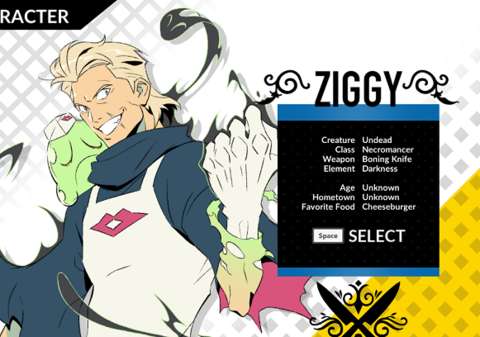
HUNTING:
In the fictitious world of Battle Chef Brigade, monsters are the only source of meat. Apparently, even grisly body parts like eyeballs and insect body parts are edible.
Of course, to get them, the chef-soldier-hunters have to hunt them down and kill them. Since this game is targeting a wide age group, there are no blood, death animations or any animations showing the harvesting of parts. Dying monsters simply discorporate and ingredients pop out of them.
For better or worse, all monsters have easily predictable behaviours. For one, all of them telegraph their attacks, giving the player nearly a couple of seconds to react.
Most monsters respawn sometime after they are killed. Indeed, the player character can go back to the match venue to cook some ingredients before returning to the hunting grounds to slay the respawned monsters.
EASY MONSTERS:
Combat is perhaps the most underwhelming part of the gameplay. The monsters are slow and dim. The bigger ones hit harder, but they are also easy to hit. Furthermore, virtually all monsters are incapable of making attacks on the rear facings of their sprites, so getting behind them is a reliable way to eliminate them.
COLLECTING AND DROPPING INGREDIENTS:
Ingredients have to be collected with a specific control input. This might seem tedious, but it is the only to deal with the lack of any feature to drop specific ingredients. That said, the control input for dropping ingredients only drops the most recently collected ingredient, which is crude.
Generally, it is in the player’s interest to collect as many ingredients as possible before having to return to the match area to stash away the ingredients. The pantry does not appear to have any limit on the amount of ingredients too.
Any ingredients that the player has not collected will stay in the hunting grounds, unless they drop into falling hazards or are eaten by certain monsters. There will be more elaboration on these later.
LOSING INGREDIENTS:
When the player character is knocked out, he/she automatically drops all of their collected ingredients and returns to the match area. The player can have him/her return to the same location to retrieve the ingredients, though the player might be better off simply restarting the match, if possible. In the case of multiplayer, the player’s opponent can steal the ingredients – something that can be unpleasant.
There are other ways to lose ingredients. Some of these may provide the player with some benefits, whereas others just cause frustration. Examples will be described later, where relevant.
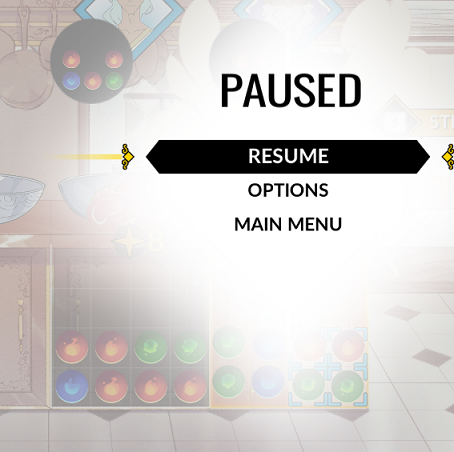
BIOMES:
There are several biomes in which monsters reside. The monsters in any biome are endemic to that biome, and will not appear in any other biome.
The first biome is the forest. It is generally the easiest because it has the least hazards and most of its monsters will not leave where they appear or do not range very far. It has a dragon at its far end. It hits hard and can take a lot of damage, but it is a great source of Fire-loaded ingredients and it does not move (much less fly). However, it will not respawn.
The clouds are the second biome. It has floating platforms with trees and high altitude vegetables and fruits growing on them. It does not have a powerful non-respawning monster, but it does have an ‘elevator’ system of sorts that the player must use to travel in between platforms. It also has fall hazards. Ingredients can also fall down the skies, and are lost forever. This can happen when lateral winds blow across the biome.
The mines are the third biome. These have a powerful non-respawning creature that can take a long time to kill, mainly because of the need to knock out its appendages before its main body part appears. This biome also happens to have two variations, one of which has a mine cart moving through it, thus functioning as a mobile collision hazard.
The fourth biome is the Darkrealm, a place with almost all of the hazards and creatures from the other biomes. It has a non-respawning creature too, and it so happens to be the most disappointing one. This is because its sprite is a variation of another creature’s, only made all black and bigger with a huge single eye. In fact, one of the player characters would remark about how underwhelming it appears to be.
LETTING CREATURES EAT INGREDIENTS:
Perhaps the best innovations in the designs of the biomes are the occurrences of critters eating ingredients. Some of the common low-level monsters can do so, such as the fly trap plants in the forest biome; the only exception is ingredients from their own species, because apparently cannibalism is a no-no in this game. (The fly trap plants will still do the biting animations on parts from their own kind, however.)
Each different species of these has a different response to having eaten ingredients. For example, the aforementioned fly trap plants develop wings, allowing them to detach from their stalks. They start spitting seeds at the player character instead of chomping down on nearby things. When slain, they yield ingredients that are different from those that they would yield when they were still growing from the ground. In the case of the flying fly trap plants, they drop seeds (of course).
PRACTICE GROUNDS IN STORY MODE:
At any time during the visual novel sections of the story mode, the player can have the player character go to the practice grounds. The practice grounds let the player hunt down monsters and cook them, in preparation for the matches – or at least that was the intended design of the practice grounds.
In actuality, the practice ground only has the forest biome. There were supposed to be more that the player could choose, but this feature was removed because there were problems with making their visual assets match with those of the practice grounds.
Considering that the narrative does include a mention of the use of portals to different biomes – as used for the matches – there could have been a similar conceit to implement access to these biomes on the Practice Grounds. Yet, even with this, it would have gone against one of the narrative plot points about portals having restricted access.
This limitation led to criticisms among players that the practice grounds have not achieved its intended function at all.
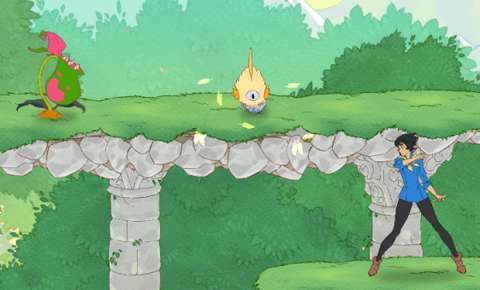
“FREE PLAY” MODE IN CHALLENGES:
Eventually, the developers implemented the “free play” mode, which is sort of the practice mode that players had been asking for. The “free play” mode is tucked under the “Challenges” menu, and is only available after the Deluxe update for the game.
Familiarize oneself with a biome with this mode can be a hassle. If the player is having trouble with a cooking match and needs to practice, the player is better off simply using the reset option to restart the match.
THREE PLAYER CHARACTERS:
When the game was released, there were only two playable characters: Mina and Thrash. Ziggy, who is the third playable character, was only added in the Deluxe version, sometime after the release of the game. All of them can do the basics of hunting and cooking, but they do so quite differently.
Mina is much more mobile than the others, thanks to a moving dodge that lets her get past any monsters in her way. Her rate of attacks is also high enough to stun-lock most enemies, with the exception of those that have no stunned animations.
Thrash is much slower than Mina. However, he compensates with high damage output, which he can increase further with his ‘berserker’ state. The state is triggered after feeding his weapon with ingredients, and can be maintained with further feeding.
Ziggy has a peculiar ability to move quickly by sliding along a platform. His main asset, however, is his magic. Where Mina’s and Thrash’s magic merely release magical hazards that hurt monsters, Ziggy summons creatures that do quite a lot of work for him. They are not particularly tough, but Ziggy can produce as many as of these as he has mana left.
Although the three player characters play radically differently, there could have been more player characters. However, the game only reached a modest amount above its target on its Kickstarter campaign; any further possible characters were stretch goals that were not met.
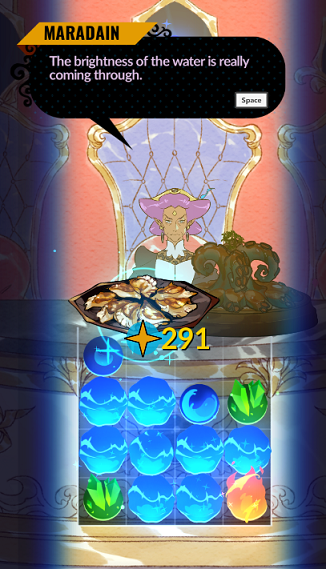
PUZZLE MINI-GAMES:
Throughout each day in the narrative and in the capital city, the player character can perform jobs for three Brigade officials. Each official is a senior in one of the main wings of the Brigade. Each one is also the person to go to for one of three mini-games.
The first and perhaps the most entertaining mini-game is the puzzles. The player is shown a dish with seemingly haphazard taste gems. The player has to cook the dish so that its score reaches the target. The player is not given any hint whatsoever, but the player can reset the puzzle without any limits.
In the story mode, the rewards for this mini-game are the main reason to attempt them. In addition to the considerable pay-out, the player character may also gain special cooking implements, including the Slow Cooker in Mina’s case.
HUNTING MISSIONS:
One of the Brigade veterans, Thorn, offers the hunting mini-game. A few sessions of this are tutorials about the player character’s combat abilities; the payment doled out is a bonus on top of the lessons. Some others are about killing specific creatures, with Thorn giving out advice about their behaviours and responses to attacks. Unfortunately, the other sessions are boring “kill X number of creatures” errands, sometimes with no further remarks or exposition from Thorn.
KITCHEN MINI-GAME:
As mentioned earlier, the Brigade is responsible for meat provender. The Brigade also runs businesses on the side, namely cooking and serving food. Incidentally, it has a restaurant at the capital that is much frequented, mainly because the cooks are either Brigadiers or in the case of the events of this game, aspirants.
Unlike the cooking matches though, the cooks are expected to serve dishes as quickly as possible, because their customers have to be served within mere seconds. Furthermore, somehow, each customer’s (simple) taste preference is known to the cooks. This makes it relatively easy to cook quickly for them.
Gameplay-wise, the player character is given access to four cooking pans, all of which do not trigger matches. Above each pan, there is the formation of taste gems that represents the customer’s preferences. If the player can make this formation appear anywhere in the grid of the dish, the dish is considered complete, regardless of the other taste gems in the grid. The dish disappears, but will eventually be replaced by another within a few seconds.
The player’s goal is to serve as many dishes as possible within the allotted time. In the story mode, the player character earns one coin for each dish served. Therefore, the player is ostensibly to be rewarded for quick thinking and quick reflexes.
The initial state of each grid of gems is randomly generated. Usually, the solution is just a few moves away, sometimes even just one if the player is observant enough. However, some of the later puzzles are more challenging.
This mini-game is also where the player can hear the most variety of voice-overs, specifically when customers express their gratitude for having been served.
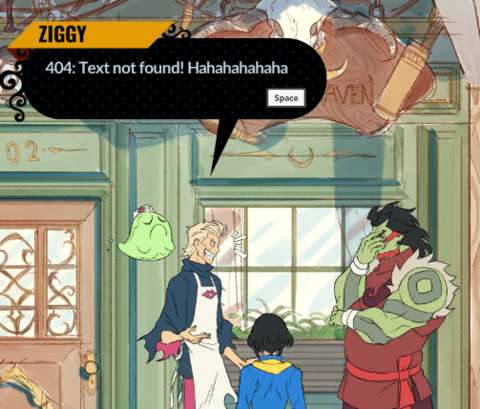
PAUSING GAMEPLAY:
When the player brings up the menus, a partially translucent white overlay appears across the screen as the background for the menus. The player still can see some of the gameplay screen underneath the overlay. This can be used to cheese past timed challenges, namely the cooking matches and kitchen mini-game.
MULTIPLAYER:
Multiplayer is strictly local-only; the developers do not have the time, and likely nor the skill, to implement fully online gameplay. A split-screen view is used for this purpose.
Anyway, both players are expected to compete against each other, after having agreed to the match conditions, such as which judge would be presiding, the biome that they would be hunting in and the player characters that they would use.
Speaking of which, both player characters would be hunting in the same biome; a clever visual trick is used to decide which end of the biome that they appear from. They can indeed attack each other. Knocking out the opponent and stealing his/her ingredients is a valid tactic. However, one cannot interact with the other’s dish, counter or pantry.
SURVIVAL MODE:
Among the menu of “Challenges” is Survival mode. In this mode, the player character’s health is prevented from regenerating, though mana can self-replenish as usual. Thus, the player has to be particularly wary of hazards, such as the ice spikes that Armarocks launch.
For each ‘round’ in this mode, the player is given a target in the form of a dish. The dish has a theme ingredient, a minimum point requirement and a taste gem majority condition; this is not unlike a mash-up of the puzzle mini-game’s goals and those of the cooking matches. The player may be require to make one dish, or two – sometimes even three. What is certain though, is that the combined scores of the dishes will rise with each round, and the other conditions become more complicated.
Immediately after the player has achieved the conditions for the dishes, the round end. The dishes’ scores are added to the player’s cumulative total, together with a bonus for whatever time is left. The player is also given two choices of rewards, such as an additional piece of gear or skill; the options are randomly generated, but one of them is always a complete heal.
If time runs out or the player character is knocked out, the session ends and the player’s efforts are rewarded accordingly. This is the way to gain the long-term reward from Survivor mode; quitting the mode would just waste the player’s time.
DAILY CHALLENGES:
There are daily challenges that are set up not unlike survival mode; the player is given gem requirements and ingredient themes. The player submits the dish score to an online repository, and those who hit high scores are rewarded points for their Brigade ranks. This has since been made moot with the Survival mode.
GALLERY:
One of the meta-game conceits is “Brigade Rank”. This is a ladder of ‘levels’, which the player climbs by either completing as many rounds in Survival mode as possible, or doing the daily challenges. The former method is much more reliable and repeatable.
As the player gains levels, pieces of artwork are unlocked for viewing in the Gallery. These show the art assets that were used for the game – or not. The latter case can magnify the impression of the game not having been developed further.
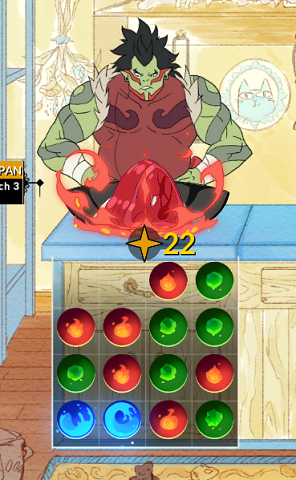
VISUAL DESIGNS:
The first and the most obvious aspect of the game is the artstyle of Battle Chef Brigade. Watercolour is noticeably prevalent in the artwork for indoors and urban environments, but forests and soil are visually crisper and have significant shadowing and lighting. Characters have far less shadowing and lighting, but have colours that are solid.
The considerable contrasts can take a while to get used to, and may even give the impression that the artists could not agree on a consistent artstyle. There is that, and the fact that the game had rather low funding.
The low funding may have resulted in the sparse animations for the game too. There is notably no use of spliced-sprite animations, which may or may not be reflective of the technical competency of the artists. That said, every frame of animation for any character – humanoid or otherwise – appears to be a sprite of its own.
The number of frames is low enough to give every playable character a stilted look, despite their cool poses and postures. Of course, the artists are trying to go for an impression of anime, but as mentioned already, the number of frames is not high enough for this to be convincing. Furthermore, the monsters that the playable characters fight have even less frames. Many even lack sprites for their getting hit.
Every other character is given the visual novel treatment. To elaborate, they have few sprites other than those that are used for their expressions, and even these only appear during dialogue. At other times, characters are completely static. (Even Mina does not have any idle animations.)
At least the characters look diverse. Indeed, just about all of them are pleasing to the eyes, including even the exotic ones. For example, there is a double-headed cyclops, who happens to be far more handsome and relatable than typical fantastical cyclopi. (Both heads treat each other as twin brothers, by the way.)
Speaking of exotic, there is a notable variety of species, quite a number of which have pointy ears. The artists have created a number of portraits, some of which are only seen in the restaurant mini-game.
The taste gems have been colour-coded according to their type. Fortunately, for the sake of the colour-blind, the promoted versions of gems have different silhouettes too. For example, Earth gems have crystals coming out of them.
Unfortunately, the basic-level gems have not been given silhouette differentiation. This can complicate the early parts of a cooking match for people who have red-green-blue colour blindness.
SOUND DESIGNS:
The music is the first thing that the player hears from the game. After all, the game’s splash intro is the trailer that was made for the game’s promotion, and all that trailer had for its sounds is its music.
Backhanded remark aside, the music would be what the player hears most of the time. All environments have their own associated soundtracks, but most of them lack ambient noises. Only a few environments have ambient noises, such as the wind blowing through a monster habitat that exists in the sky.
Voice-overs make up the bulk of the game’s audio assets. Many characters are voiced, though the player should expect the kind of calibre (or lack thereof) that have been heard in the English dubbing of Japanese anime. Still, they are not terribly grating, or too ham-fisted.
In particular, there are the lines that Kamin, a senior official of the Brigade, says just before each cooking match in the tournament. They are dreamy, almost bordering on the melodramatic in a hilariously appealing way.
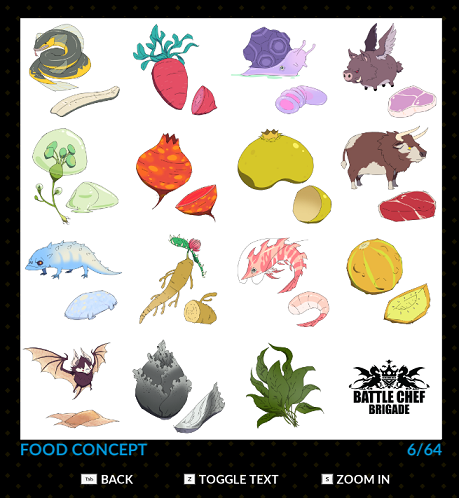
SUMMARY:
At first glance, Battle Chef Brigade seems like such a refreshingly great idea. Even after having played it, there is still the impression that it still has potential in its mixed but very accessible gameplay.
Unfortunately, the game is under-developed. This shows in the lack of animations for its otherwise great artstyle and the notable paucity of playable characters. For a fantastical world that has the mysterious presence of edible monsters and interesting characters, its main story happens to have a rather underwhelming conclusion.
It is not entirely a disappointment, of course. If anything, the game has a style that is rarely seen, even among indie games.

